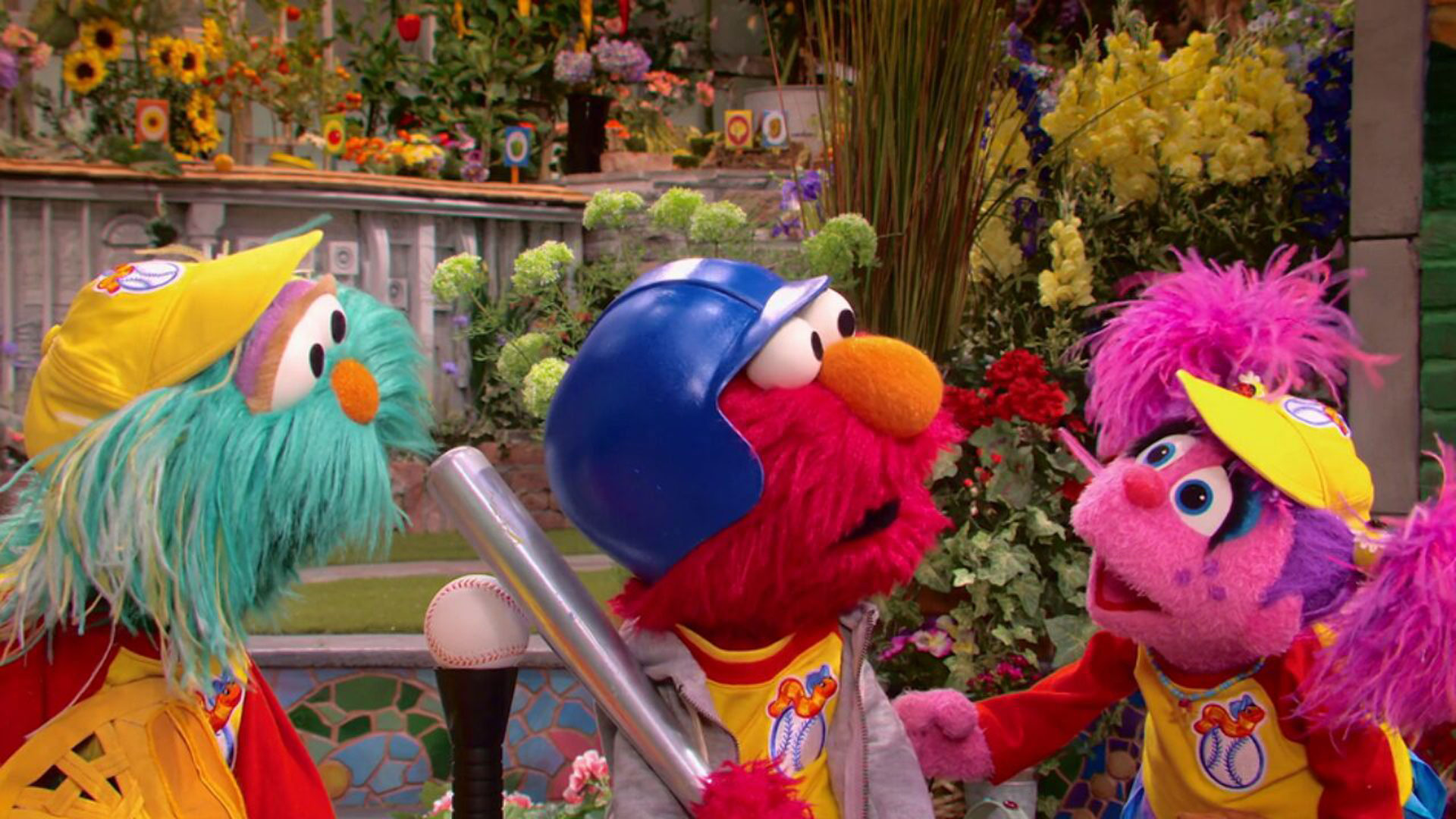 In the Sesame Street episode, “Elmo’s Good Luck Charm,” Elmo believes his lucky baseball card is the reason he plays tee-ball well.
In the Sesame Street episode, “Elmo’s Good Luck Charm,” Elmo believes his lucky baseball card is the reason he plays tee-ball well.
Do you remember when you first learned to ride a bike? At first, you had to figure out how to get both feet on the pedals, steer the bike, balance, and then how to stop the bike. For many of us, there was someone holding on to the back of the bike seat and encouraging us, saying, “You can do this!” and “I believe in you!” Eventually, after many falls, skinned knees, self-doubt, and a lot of practice, we looked behind us and realized no one was holding on to the seat any longer — we were riding on our own. The sense of accomplishment was wonderful! Each success we experience helps build our self-confidence. Although we had help with learning to ride the bike, no one did it for us — we practiced until we became adept at bike riding.
In the Sesame Street episode, “Elmo’s Good Luck Charm,” Elmo believes his lucky baseball card is the reason he plays tee-ball well. Before a tee-ball game, Elmo realizes he lost the lucky baseball card, and he is not confident that he can play without it. Elmo’s friends convince him that practicing is what is important, not a good luck charm. Just as learning to ride a bike and playing tee-ball take practice, so do many challenges we all face as we are growing. Self-confidence means believing in yourself, no matter the setbacks.
Learning a new skill isn’t easy for anyone but can be especially hard for young children, as they need to manage their big feelings of frustration and disappointment. With practice and perseverance, children can build self-confidence, succeed at the skill, and most importantly, develop a positive mindset for not giving up in the face of challenges, failures, or mistakes.
Often, the best way to boost your child’s self-confidence is to refrain from jumping in to help. First, validate the way your child is feeling (“I know you are feeling frustrated” or “I know it’s hard to learn how to ...”). Then, acknowledge your child’s efforts using positive talk (“I see how hard you are working!” “You can do it!” “Mistakes happen and it’s okay” “Don’t give up” “Keep trying!”). When you see your child becoming frustrated, have them take a break by taking slow, deep belly breaths, or engage in another activity and try again later when they are calm. Help them learn self-regulation strategies to manage big feelings using the Sesame Street Breathe, Think, Do app.
If you have ever watched the efforts of a baby learning to walk, you can understand what it means to practice, practice, practice. While we guide them in this process by holding their hand, encouraging them to “Walk to Mommy (Daddy, brother, sister)”, and clearing away obstacles in their walking path, we do not, cannot, walk for our baby. This is a skill they need to do on their own. The best part of watching a baby learn to walk or toddle, is seeing the look of accomplishment and pride on their faces as they barrel across a room and realize they did it!
Learning to walk is the beginning of many challenges your child will encounter on the way to becoming a fully confident self. Others are learning how to get dressed, writing their name, catching and kicking a ball, building the right size stable for their plastic animals, etc. As parents and caregivers, our job is to provide experiences that reinforce your child’s capabilities and a belief that they can trust themselves. Remind them that it’s okay to make mistakes along the way — everyone makes mistakes, even grown-ups! This consistent message will help to build confident children who are not afraid to take risks and face challenges.
Here are some ideas to help your child build self-confidence:
- Give your child age-appropriate chores to do so they can contribute to the family and master new skills (fill a pet’s water bowl, put their toys away, help set the table by counting and placing the napkins, spoons and forks needed).
- Once your child masters a new skill, have them teach it to someone else (a younger sibling, a friend, a grandparent).
- Take pictures of your child as they work on a challenging task. The pictures should show the process of trying, failing, then trying again until they are successful.
- Offer support and confidence in their abilities (be a cheerleader).
- Remind your child to engage in positive self-talk: “If I practice, I can do this.”
- Create an “I Can” book with your child. Each page should have an “I can” statement. Examples: I can catch a ball, I can write my name, I can ride a scooter. Your child can draw a picture matching the page or you can include photos of your child as they practice and accomplish the skill.
Rosemarie T. Truglio, Ph.D., serves Senior Vice President of Curriculum and Content at Sesame Workshop, the nonprofit organization behind Sesame Street. A leading authority on child development, she has been with the Workshop for more than 20 years. Her book Ready for School!: A Parent’s Guide to Playful Learning for Children Ages 2 to 5 is available wherever books are sold. This article originally appeared on pbs.org/parents

By submitting your comments, you hereby give AZPM the right to post your comments and potentially use them in any other form of media operated by this institution.